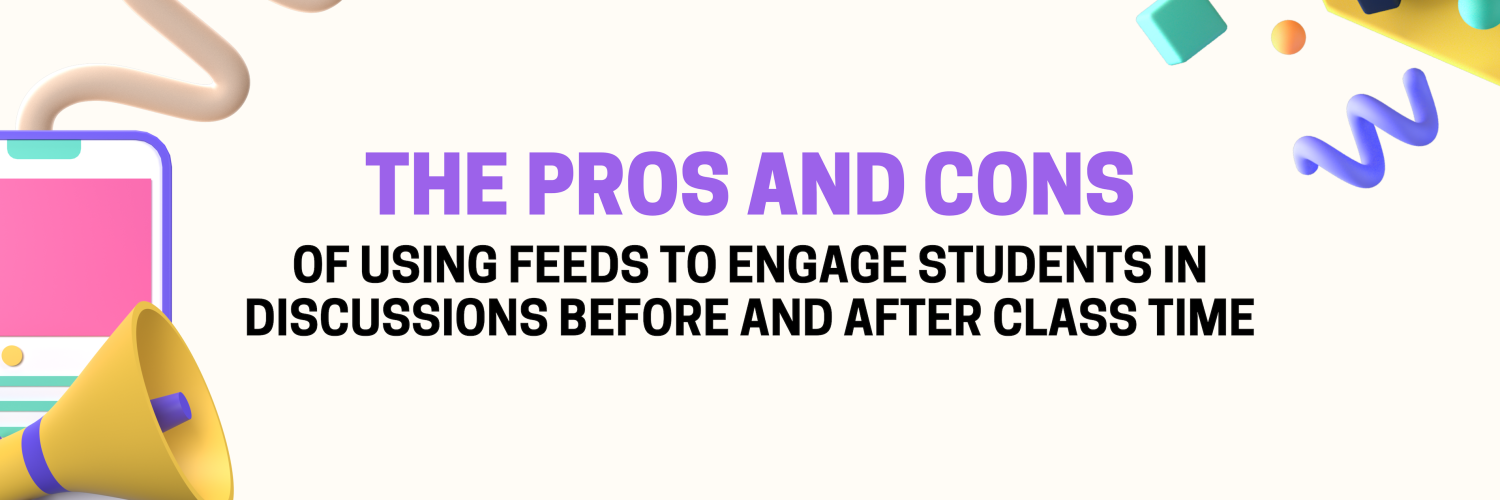Engaging students effectively before and after class time is a critical component of modern education. Unlike traditional discussion boards, feed systems provide a dynamic and continuous flow of content, facilitating more regular and meaningful engagement.
This method not only supports equal participation opportunities for both outspoken and shy students but also offers numerous benefits while presenting some challenges. Here’s a closer look at the key pros and cons of using a feed system:
✨Pros
Increased Engagement
A feed system encourages students to interact with course content more regularly. This continuous engagement helps avoid the pitfalls of last-minute cramming before exams. Additionally, Feeds can promote discussions among students, allowing them to comment on and build upon each other’s ideas.
Structured Learning Pace
Drip-feeding content helps set a consistent learning rhythm, preventing students from either skipping ahead or falling behind. Releasing content gradually can create excitement and motivation for upcoming lessons, keeping students interested and engaged.
Improved Preparation and Retention
Providing content to students before class allows them to preview material and come prepared. Post-class feeds reinforce learning, aiding retention and comprehension.
Opportunity for Timely Feedback
Instructors can provide feedback on student responses or questions within the feed, allowing for more personalized guidance and support. Students can put into practice vocabulary and concepts of the subject matter in a low-pressure environment.
Equal opportunity for participation
Feeds give all students, regardless of their personality type, an equal chance to contribute. This can help balance participation between shy and outspoken students. For shy students, contributing via a feed can be less intimidating than speaking up in class, potentially reducing anxiety associated with class participation.
⛔️Cons
Potential for Information Overload
If not managed carefully, constant feeds could overwhelm students with too much information, leading to stress and disengagement.
Technology Dependence
Relying on a feed system requires consistent access to technology, which may not be equitable for all students, potentially widening the digital divide.
Reduced Flexibility
Some students may prefer to work ahead or at their own pace, which a structured feed system can limit.
Additional Workload
Creating and managing regular feed content requires extra time and effort from instructors, which can be time-consuming, without a proper plan.
Risk of Spoon-Feeding
Overuse of feeds could lead to over-reliance on instructor-provided content, reducing students’ initiative for independent learning.
How CampusKnot Mitigates These Cons
CampusKnot is a student engagement software, that offers solutions to address student participation and engagement using a Feed system. The feed format enables seamless communication between teachers and students, saving time and extending classroom discussions beyond traditional class hours.
The platform’s feed-based design allows students and educators to easily ask questions, start discussions, and share content in a familiar social media-like environment while using tags for organization and anonymous prompts.
Here is how CampusKnot mitigates the cons of a feed system:
Managing Information Overload
CampusKnot allows instructors to customize the frequency and amount of content delivered to students. Inside the CampusKnot Feeds faculty can prevent information overload by scheduling content and turning on and off posting rights.
Ensuring Equitable Access
CampusKnot is designed to be accessible across various devices, ensuring that all students, regardless of their technology access, can participate. The platform’s mobile compatibility ensures that students can stay engaged even on the go.
Reducing Instructor Workload
CampusKnot streamlines content creation and management with its user-friendly interface. Instructors can easily schedule posts and get an AI summary highlighting trop trending questions and comments made by students, reducing the overall workload.
Encouraging Independent Learning
CampusKnot fosters a balance between guided learning and student independence. The platform’s collaborative features encourage peer interaction and self-directed exploration, promoting a more holistic learning experience.
When implementing a feed system, it’s crucial to strike a balance between providing structure and allowing for self-directed learning. Instructors should carefully consider their course goals, student needs, and available resources to determine the most effective approach. With the right tools, the potential drawbacks of a feed system can be effectively mitigated, enhancing the overall learning experience.




